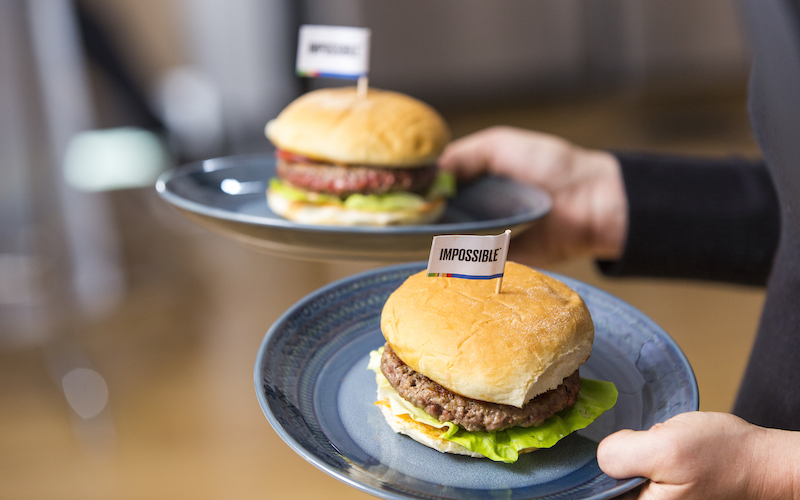How Impossible Foods made a healthier, more environmentally-friendly burger possible.
I have been a consistent meat eater for the majority of my adult life. For any given restaurant run, it would be an absolute rarity if I ordered anything that didn’t contain some combination of beef, pork, or chicken. However, for the New Year, I decided to test my own abilities of self control and try out a vegetarian diet. While the first week of January went fairly simply, I had totally forgotten about the major event that would soon take place: a business trip to Las Vegas (a place not well known for self control). However, it was that very trip where I discovered a ray of hope for meat-craving vegetarians: the Impossible Burger.
Completely composed of plants, the Impossible Burger truly lives up to its name. The contents of a typical Impossible Burger are heme, sugars, vitamins, wheat protein, potato protein, xanthan, konjac, coconut oil, and soybeans. This combination has allowed for it to have the taste and texture of a typical beef burger, only with entirely different ingredients.
On the surface, the Impossible Burger appears to be a response to the many objections potential meat eaters may have. Two of the most common reasons you’ll hear when it comes to vegetarianism are ethical and health reasons, both valid in their own right. But, looking past those justifications, one must also consider the environmental effects of meat production. The Guardian has reported that every 100 grams of beef produced results in 105 kilograms of greenhouse gases, as opposed to tofu, which produces less than 3.5 kg. The Guardian also cited new research showing that while dairy and meat supply 37 percent of protein and 18 percent of calories, their production is responsible for 60 percent of agricultural greenhouse gas emissions. It is this lack of sustainability that Impossible Foods, creators of the Impossible Burger, is looking to change.
This mission is clearly paying off, as choosing an Impossible Burger over its beefy counterpart is the equivalent of saving 18 miles of driving emissions. And, thanks to the hard work of Impossible Foods founder Dr. Patrick O. Brown and his team, the Impossible Burger is growing in popularity, available in 5,000 restaurants spread out across the U.S., Macau, and Hong Kong. Even major chains such as White Castle have embraced the meatless burger trend, testing an “Impossible Slider” in certain locations. This popularity will likely continue to assist Impossible Foods’ sustainable trajectory. As Dr. Brown told TIME, “We’re not going to address the problem by telling people to change their diet – that’s never going to work. Instead, we have to produce foods that consumers prefer over what they’re getting today from animals.”
While society’s carnivorous desires may make an entirely plant-based burger a hard sell, it’s clear that Impossible Foods is on the right track towards changing how we think about meat. With the hard work and scientific innovations seen with something like the Impossible Burger, vegan food (long the laughingstock amongst traditional meat eaters) has potential to make it to the mainstream. A healthy, sustainable Impossible Foods barbecue, complete with plant-based burgers and meatless chili fries might seem far fetched in our meat-loving culture. But it’s not impossible.









